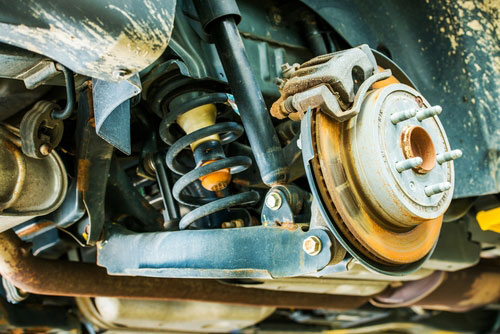A car’s suspension system is one of the most critical components in ensuring a smooth, stable, and safe ride. It connects your vehicle to the wheels and allows for motion control, shock absorption, and balance during acceleration, braking, and turning. Over time, the suspension system can deteriorate due to wear and tear, making it essential for every car owner to understand how it works and when to seek professional help.
The Role of a Suspension System
The suspension system is made to make the tires’ contact with the road surface as frictional as possible. This makes the steering stable and the riders comfortable. It has many parts, like struts, springs, shock absorbers, control arms, and ball joints. These parts work together to smooth out bumps, holes, and uneven ground in the road so that they don’t affect your comfort or control as you drive.
When the suspension system is in good condition, it enhances handling, braking efficiency, and overall vehicle performance. However, when it starts to fail, drivers often notice subtle changes that can quickly become major safety hazards if ignored.
Common Signs of Suspension Wear and Tear
Recognizing the early signs of suspension wear is crucial for preventing expensive repairs and maintaining safe driving conditions. Below are some of the most common symptoms that indicate potential issues with your car’s suspension system.
- Uneven Tire Wear
If your tires are wearing down differently or faster on one side, it could mean that your suspension isn’t aligned properly. Misaligned suspension can cause your car to lean or pull to one side, putting unnecessary pressure on specific tires and reducing their lifespan. - Rough or Bumpy Ride
A noticeable decrease in ride comfort is one of the first signs of suspension trouble. When shocks or struts wear out, you will feel every bump, crack, and dip in the road. The car may even bounce excessively after hitting a bump, which means the suspension is no longer absorbing road impact properly. - Drifting or Pulling During Turns
If your car drifts, leans, or pulls when turning corners, it’s a strong indicator that your suspension system is weakening. This issue affects stability and makes it harder to control the vehicle, especially at higher speeds or during sharp turns. - Nose Dives During Braking
When you apply the brakes and the front end of your vehicle dips forward, the shocks or struts may be failing. This can extend braking distances and compromise safety in sudden stops, especially on wet or slippery roads. - Greasy or Damaged Shocks and Struts
Inspect your shocks and struts visually. If they appear oily or greasy, it could mean that fluid is leaking from them, signaling that they are no longer functioning effectively. Any visible dents or damage on these components should be addressed immediately. - Vehicle Sitting Low on One Side
A car that appears lower on one side when parked could have a damaged spring or another failing suspension component. This imbalance can affect handling and cause uneven pressure on the tires.
The Importance of Professional Suspension Service
Once you notice any of these warning signs, it’s important to schedule an inspection with a trusted auto repair specialist. Suspension issues tend to worsen over time and can affect not only your ride comfort but also your ability to steer, brake, and maintain control of the vehicle.
For comprehensive diagnostics and repairs, specialized services like https://alleuropeanautorepair.com/air-hydraulic-suspension-services/ provide advanced solutions tailored to both traditional and modern vehicles. Air and hydraulic suspension systems, common in European and luxury models, require expert attention to maintain their precision and responsiveness.
Keeping Your Ride Safe and Smooth
Keeping the suspension system in good shape is important for the safety, performance, and longevity of your car. By having regular checks, replacements at the right time, and good repairs, you can keep your car running smoothly and avoid expensive breakdowns. If you watch out for early warning signs and get professional help, you can keep your suspension system in great shape for many years.



